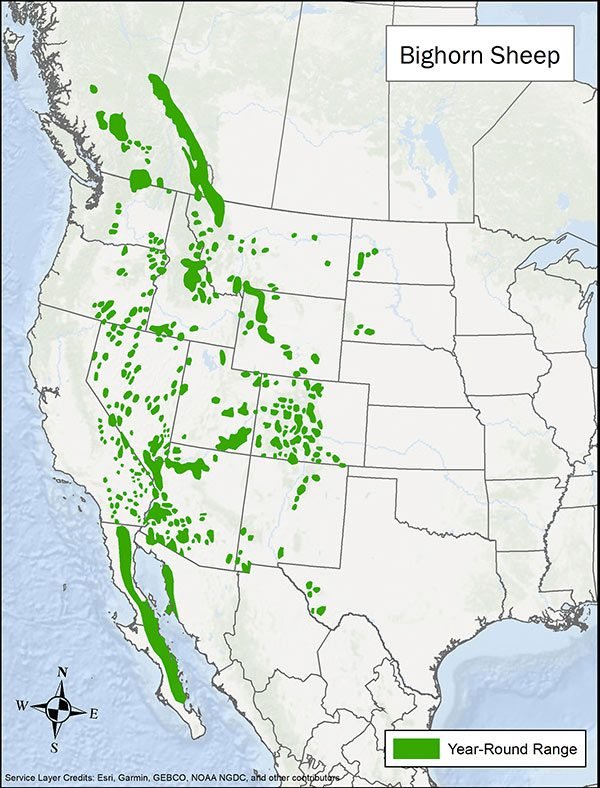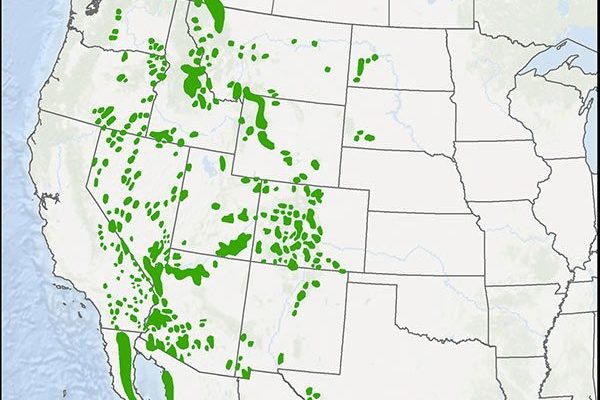
Bighorn sheep are like the mountain climbers of the animal kingdom. They’re built for steep, rugged terrains, and their homes reflect that. These large mammals primarily inhabit the rocky, mountainous regions of North America. But as with any animal, the place they live isn’t just about the geography; it’s also about their survival needs—food, shelter, and safety. Let’s dive deeper into the details of where these magnificent animals call home.
Understanding Bighorn Sheep’s Habitat
Bighorn sheep are particularly well-suited for mountainous regions. Their habitat can range from rocky outcrops to alpine meadows. They often prefer steep, rugged terrains where they can easily escape predators. Here’s the thing: their hooves are specialized for gripping rocky surfaces, acting almost like nature’s best climbing shoes. This adaptation allows them to navigate areas that would be difficult or impossible for many other animals.
You might be wondering what specific landscapes they thrive in. Bighorn sheep enjoy areas with plenty of vegetation, particularly grasses, forbs, and shrubs. They often graze in open fields during the day and retreat to rocky areas for shelter at night. Their ability to adapt to varying altitudes—from 3,500 feet to over 10,000 feet—enables them to live in diverse environments, from the deserts of the Southwest to the snow-capped peaks of the Rockies.
Regional Distribution of Bighorn Sheep
When it comes to where bighorn sheep live, their range is impressive. You’ll find them primarily in western North America. In the United States, they inhabit locations such as:
- The Rocky Mountains
- The Cascade Range in Washington
- The Sierra Nevada in California
- The Badlands and Black Hills in South Dakota
- The deserts of the Southwest, including parts of Arizona and Nevada
In Canada, bighorn sheep roam the Rocky Mountains and several national parks. In fact, areas like Banff and Jasper are well-known for their hardy populations. You can also spot them in some remote regions of Mexico. Each location offers a unique set of challenges and resources, shaping the behaviors and lifestyles of these sheep.
Life in the Mountains: Social Behavior and Structure
Bighorn sheep are social animals that often live in groups called herds. These herds provide safety in numbers and are usually structured around a hierarchy. The largest and strongest males have the most mating opportunities. Here’s a fun fact: ram fights—where males butt heads—are not just for show; they’re a way for rams to establish dominance and attract females.
During the winter, these herds tend to split into smaller groups, allowing them to forage more efficiently. For example, you might see one group grazing in a sunny meadow, while another navigates rocky terrain. Their social structure is fascinating because it highlights both cooperation and competition, which are essential for survival in a harsh environment.
Challenges in Their Habitat
While bighorn sheep are well-adapted to their harsh mountain environments, they still face several challenges. One major threat is habitat fragmentation due to human activities like urban development and road construction. These changes can limit their movement and access to food and water sources.
Additionally, diseases can be another significant concern. As they live close to domestic sheep in some areas, bighorns can catch diseases like pneumonia, which can decimate their populations. Conservation efforts are crucial to help maintain and protect their habitats, ensuring these magnificent animals continue to thrive in the wild.
Conservation Efforts for Bighorn Sheep
Knowing where bighorn sheep live is just part of the story; understanding how we can help protect them is the other half. Many organizations work tirelessly to conserve these animals and their environments. Efforts often include monitoring populations, restoring habitats, and educating the public about their importance.
For instance, some parks implement wildlife corridors—these are safe passageways that allow bighorn sheep to move between different areas without facing human obstacles. This helps maintain genetic diversity and increases their chances of survival. Engaging in conservation can be as simple as supporting local wildlife initiatives or visiting national parks where bighorn sheep roam.
How You Can Help Protect Their Habitat
You might think, “What can I do to help bighorn sheep?” Well, there are actually several ways you can contribute:
- Visit national parks responsibly. Stick to trails and follow guidelines to minimize human impact.
- Support organizations that focus on wildlife conservation.
- Spread awareness about the threats facing bighorn sheep and other wildlife.
- Encourage local governments to prioritize green spaces and wildlife protection.
By taking these small steps, you can make a difference in preserving the habitats of bighorn sheep. Remember, the mountains belong to them, and by protecting their home, we keep their incredible story alive.
In conclusion, bighorn sheep are truly remarkable creatures with an incredible ability to navigate the rugged terrains of North America. Their habitats, whether in the towering Rockies or the arid deserts, play a crucial role in their survival. As we learn more about where they live and the challenges they face, it’s essential to take action to protect them.
Remember, every step you take to support these majestic animals contributes to a healthier ecosystem. So, whether you’re exploring their habitats in person or supporting conservation efforts from afar, know that you’re helping to preserve the home of the bighorn sheep. Together, we can ensure that future generations will also get to marvel at these magnificent creatures roaming freely in their natural habitats.

